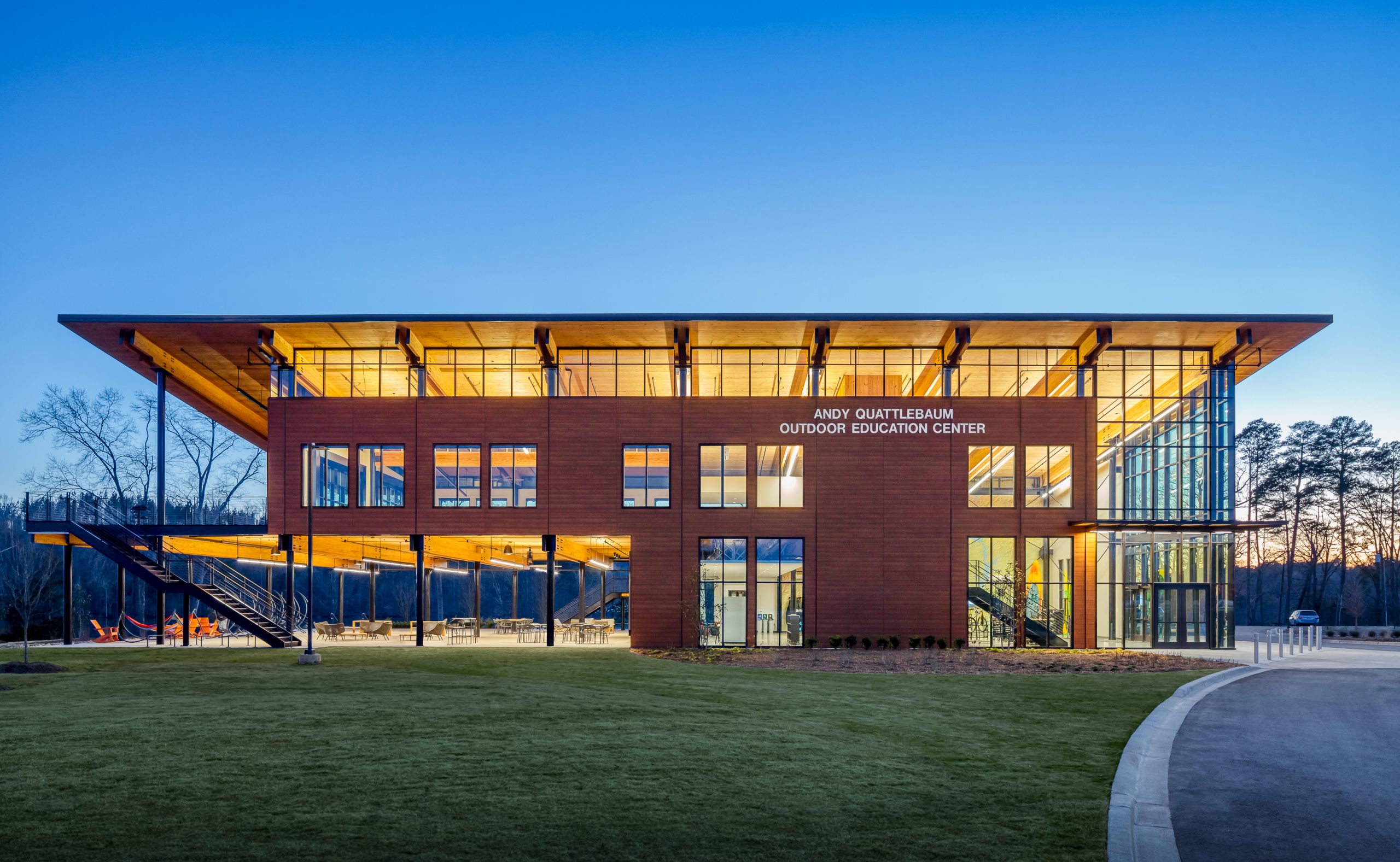Mass timber design, including structural systems and products, has achieved new levels of innovation and opportunity, providing a powerful design approach that is extremely sustainable and aesthetically impactful.
The U.S has recently experienced an influx of mass timber structures and Cooper Carry has had the privilege, over the past 15 years, of helping lead the design community in re-applying centuries-old wood building systems into innovative design and engineering solutions.
Sustainability and Mass Timber Design
The progressing popularity of mass timber is rooted in its powerful impact on sustainability. Building with timber can reduce the overall carbon footprint of a structure, unlike steel and concrete. The potential sustainable impact of mass timber is due to a few factors.
The study “Carbon, Fossil Fuel, and Biodiversity Mitigation with Wood and Forests” published in the Journal of Sustainable Forestry found that using wood as a building-material substitute could save “14 to 31 percent of global CO2 emissions and 12 to 19 percent of global [fossil fuel] consumption by using 34 to 100 percent of the world’s sustainable wood growth.”
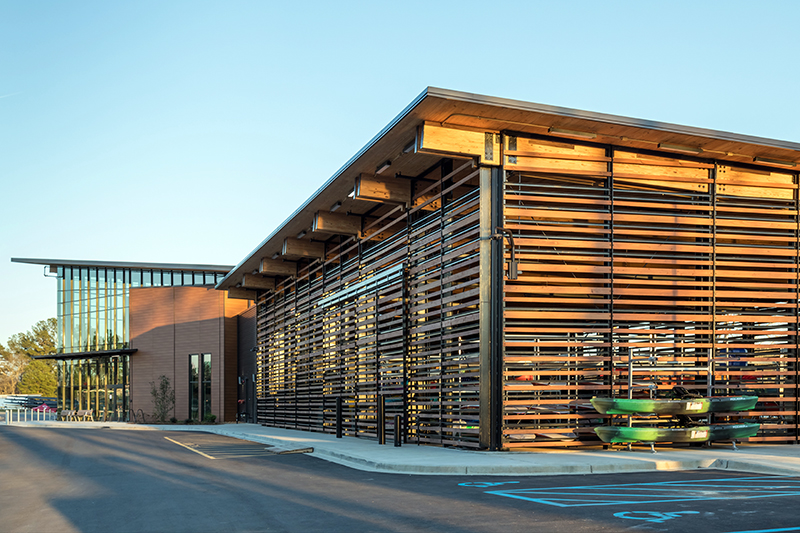
First, wood is a rapidly renewable resource. Net forest area in the U.S. has been stable for a century. Each year the U.S. grows significantly more wood than is harvested and there is an average net annual increase in growing-stock trees nationwide of 26 billion ft3. North America has seen 50 consecutive years of net forest growth that exceeds annual forest removals, with approximately 751 million acres of forest area. Unlike alternative building materials, wood is truly renewable, stabilized and abundant.
In fact, harvesting forests infinitely increases the ability for them to store more carbon. This is based on when a tree is harvested; if used as a manufactured structural system, it continues to store the carbon for the duration of a structure’s lifetime. Then as another tree is planted and grown in its place, two trees are now storing carbon from the same piece of land. This cycle can repeat itself infinitely, multiplying the carbon storage capacity per acre. This will increase the value of mass timber, especially as governments move toward carbon taxes and other financial incentives to reduce a project’s carbon footprint.
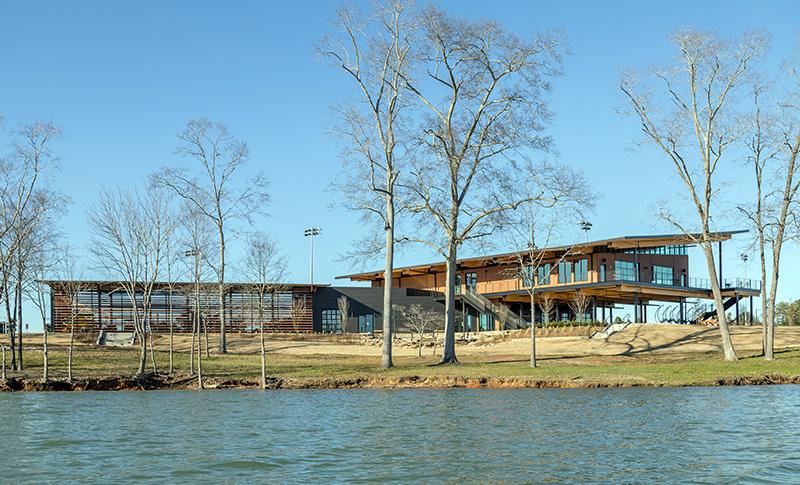
Clemson University
In the case of Clemson University’s Andy Quattlebaum Outdoor Education Center designed by Cooper Carry, the mass timber structural members of the building required 24 acres of harvested southern yellow pine. This is the second building in the country to utilize southern yellow pine in a mass timber assembly.
The design of the structural framing and roof/floor slabs for the project was analyzed for efficiency and cost savings. The use of cross-laminated timber for elevated floors and roof slabs allowed the design team to increase the spacing between columns and reduce the number of secondary joists and columns. In addition, cost for ceilings and integrated lighting was eliminated due to the opportunity to leave the wood structure exposed. Considering all of these factors, using mass timber in lieu of structural steel framing, decking, and ceilings provided cost savings.
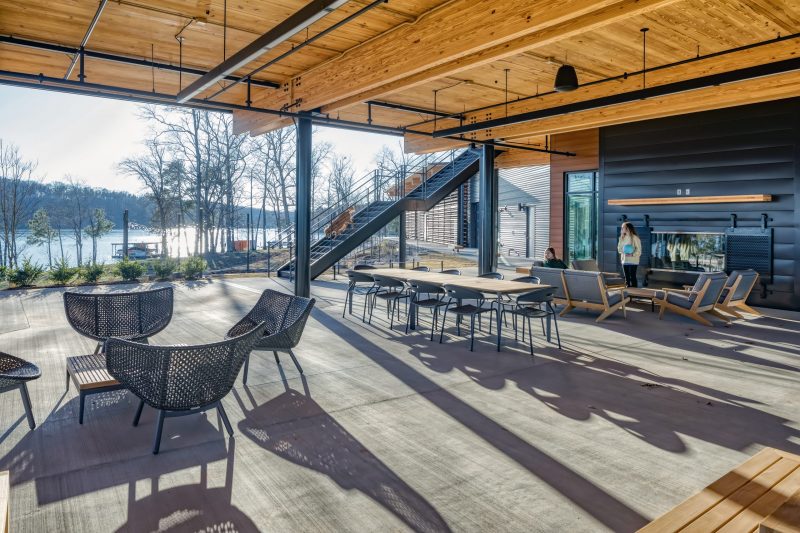
A few benefits of the structural systems:
- Offsite prefabrication provided a reduction in construction time.
- Timber structure can be installed year-round in most climates.
- Prefabricated timber structure can resolve issues with tight urban/campus job sites where finding the space for laydown space, concrete delivery, mixing, or steel fabrication is limited.
I remember seeing the first sketches from Cooper Carry and how amazing it was. I consider this Clemson’s finest front porch. I know Thomas Green Clemson would love to sit here and look back at his legacy and know that we’re still continuing as a university to develop and grow our economy and use our natural resources for the benefits of our state and nation. That was his vision, and that’s what he gave to us. This is the first building manufactured from southern yellow pine CLT east of the Mississippi River. It will be a place visited by millions in the years to come. It really is a dream come true to see this magnificent building come to fruition.” – Pat Layton, Clemson University Wood Utilization + Design Institute
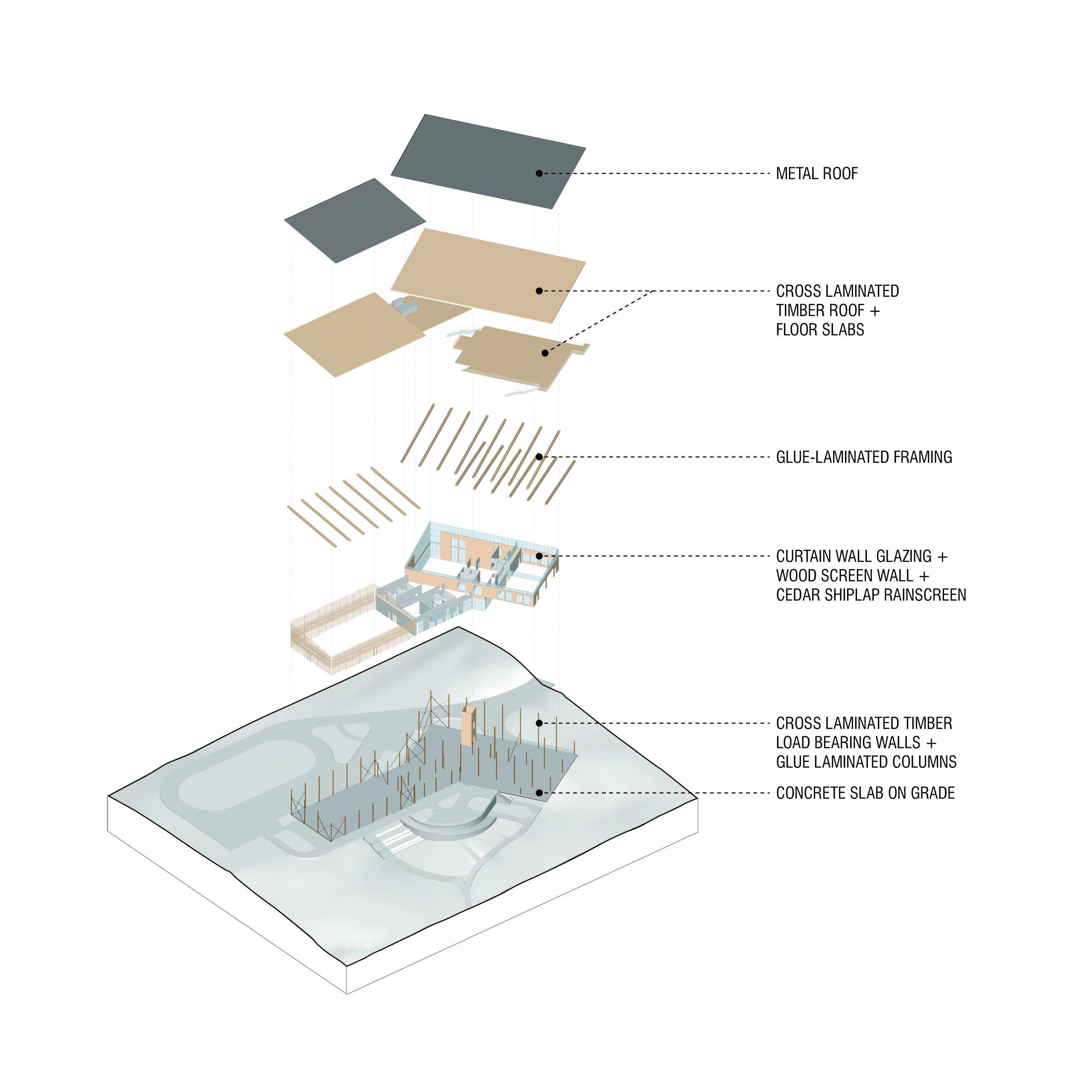
The design team at Cooper Carry continues to explore and develop mass timber design solutions through the innovation in codes, cost models, technology, and sustainability. We believe the potential benefits of this system to be far from fully understood and utilized. As awareness of the critical need to reduce and even reverse our carbon footprint elevates, we see mass timber construction to be one of the most impactful solutions available.
The Andy Quattlebaum Outdoor Education Center has received the 2021 U.S. WoodWorks—Wood Design Award for Regional Excellence and the 2020 ENR Southeast—Best Sports and Entertainment Facility.
Mass Timber and Biophilic Design
Exposure to nature, natural materials and the cycles of time within buildings improve productivity, health and well-being. Cooper Carry has incorporated the texture and color tones from wood to create a natural and unique aesthetic for each project.
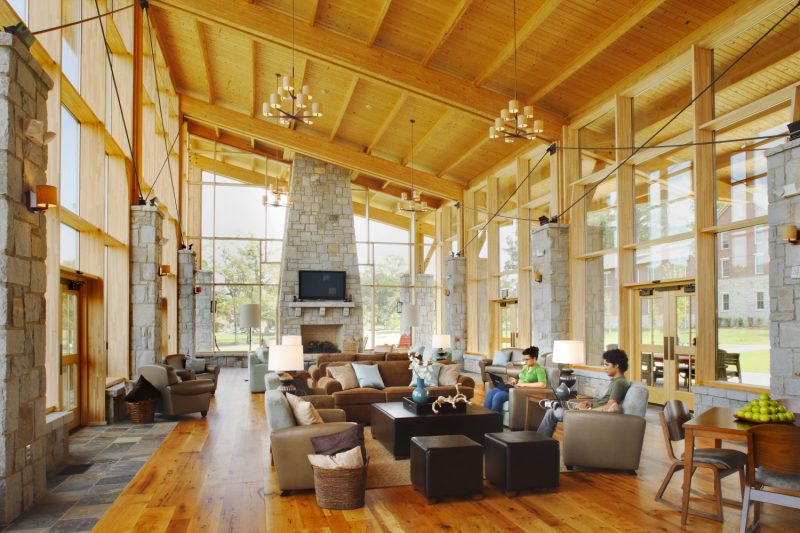
Berry College
Berry College’s Audrey B. Morgan and Deerfield Halls are nestled between the campus and the surrounding natural forest. With the main commons pavilion built out of glue-laminated timber structure and mass timber structured curtainwall, the aesthetic of the residence hall creates a warm sense of home for this agrarian campus. Students who may be living away from home for the first time can find a sense of calm and wellness with the warmth of wood throughout the building.
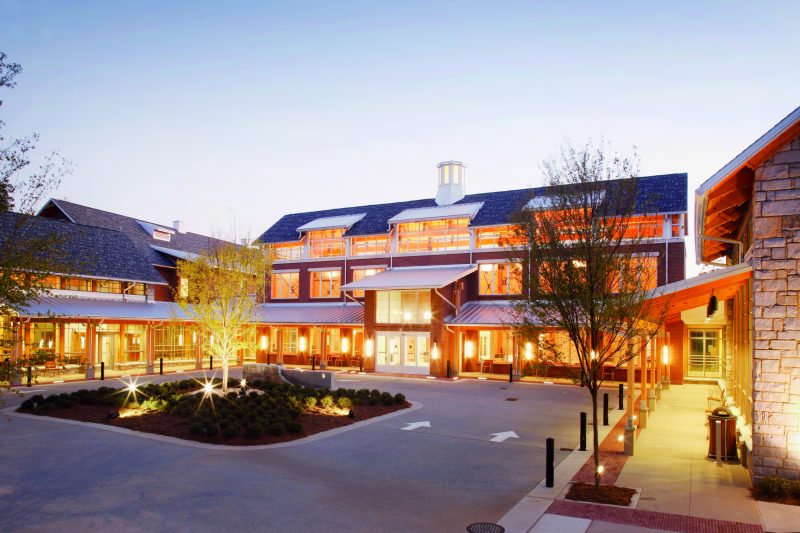
Roosevelt Warm Springs
Roosevelt Warm Springs Institute for Rehabilitation is a rehabilitation, residential and training facility that serves patients with disabilities. The mission of the center is to provide counseling, employment development, life adjustment services, academic education, and therapeutic recreation. Cooper Carry designed the social and collaborative spaces of the buildings with visible glue-laminated structure.
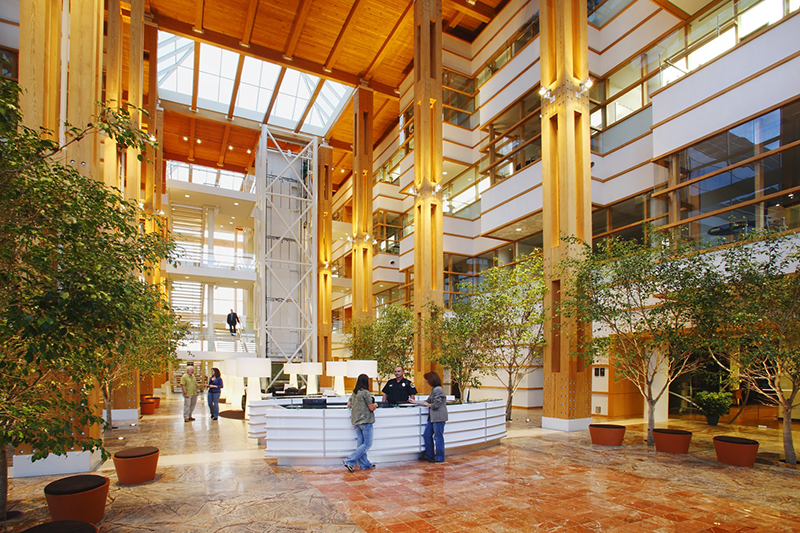
HudsonAlpha
HudsonAlpha’s Institute for Biotechnology, located in Huntsville, AL, is a research center featuring a four-level atrium structured with glue-laminated timber columns that span approximately 60 feet. The roof structure was design with glue-laminated beams and tongue and groove structural wood decking. The atrium smoke and fire analysis was carefully examined to meet the codes of the time. This early innovator of mass timber structure became one of the first projects of its kind in that region.
Mass Timber’s Financial Impact
The utilization of mass timber also provides an array of financial opportunities. One of the major benefits of mass timber is the speed of installation. Mass timber sheer walls, elevator shaft walls, and floor and roof slabs have proven to have much shorter installation schedules when compared to masonry, concrete and steel. In addition, prefabrication and modular construction models continue to accelerate the speed, accuracy, and cost of mass timber systems. These qualities are further supported with digital design tools such as building information modeling that allows the design team to fully integrate the prefabricated panels into the overall design assembly.
New Codes: Mass Timber
Recognizing the possibilities of mass timber, the International Code Council has approved 14 changes to the International Building Code (IBC). This proposal will allow tall wood buildings as a part of the 2021 IBC. With additional fire resistance ratings and non-combustible protection up to 18 stories are permitted in the new code for business and residential occupancies.
Over the last decade, Cooper Carry has been involved in multiple mass timber projects that helped redefine construction methods. As buildings continue to be constructed with more timber, and codes progress accordingly, our pursuit for the next innovation in wood design will accelerate.
